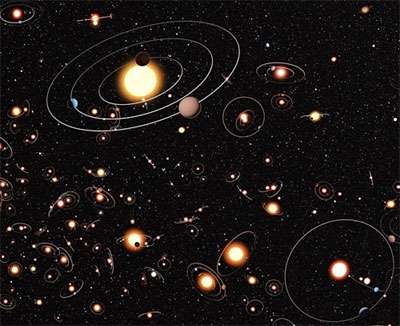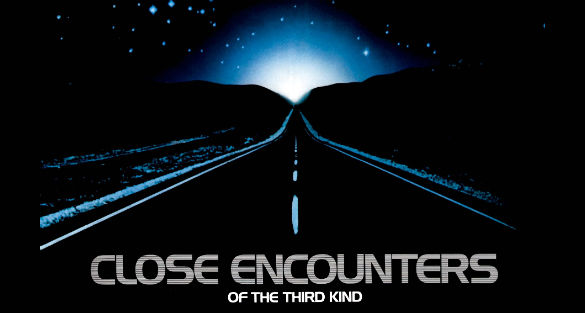
More and more specialists admit that life is everywhere in Universe and three-four billion years of favourable conditions, lasting on a planet, ensures the emergence and development of intelligent beings and eventually the birth of a “technological civilization”, capable of building spaceships, for travelling to other inhabitable planets. These conditions, though rare, are found in many places in the immensity of the universe. On this basis, the extraterrestrial hypothesis became the easiest way to explain the UFO phenomenon.
 On the other hand, prestigious ufologists, including Dr J. Allen Hynek or Jacques Vallée, questioned this explanation. They, along with die-hard sceptics, have mentioned, among others, that the distances between civilizations are too large for such cosmic travelling. But, as I have argued in my recent book “UFOs over Romania”, if we make an appropriate approach, we will discover that the most important distances between cosmic civilisations are not those in space but those in time.
On the other hand, prestigious ufologists, including Dr J. Allen Hynek or Jacques Vallée, questioned this explanation. They, along with die-hard sceptics, have mentioned, among others, that the distances between civilizations are too large for such cosmic travelling. But, as I have argued in my recent book “UFOs over Romania”, if we make an appropriate approach, we will discover that the most important distances between cosmic civilisations are not those in space but those in time.
I have estimated that in the history of our Galaxy could have come into being a number of technological civilisations, of which, maybe a few hundred survived the childhood diseases (that we face now on Earth) and still exist. But these civilisations have not arisen simultaneously. For example, in July 2015 it was announced the discovery at 1,400 light years from Earth, of the exoplanet Kepler 452b. It is similar to Earth, orbiting in the habitable zone of a Sun-like star. That solar system is one billion years older than ours. That means that life and a possible technological civilisation could have appeared here one billion years earlier than on Earth. More generally, the first technological civilisations in the Milky Way could appear a billion years ago, or even earlier. Consequently, we understand that the possible civilisations in the Cosmos are far apart from each other not only in space, but also in time. In our Galaxy, these several hundred surviving civilisations, estimated above, have appeared, most likely, one in a several million years. Therefore, in the Milky Way there is no civilisation close to our level.
What will become of our civilisation (if it will survive) over millions (or billions) of years? It is impossible to imagine. We do not forget that we are not able to predict our future, even in a perspective of just several hundred years. How would the inhabitants of a civilisation that has outstripped us with millions of years look like? Maybe they became immortal, maybe time and space do not matter to them, they may have moved into a pervasive virtual reality, in other dimensions and so on. But the real answer is almost certainly even much more complex and defies our logic and imagination. We can accept however that they have been transformed into something else, beyond our understanding; into something we can name as a “hypercivilization”.
If somebody considers that we were too optimistic and the intelligent beings are much scarcer, we should add that our Milky Way is only one of at least 150 billion, more or less similar, galaxies of the Universe accessible to our instruments. And we have strong reasons to believe that there are other Universes too, maybe “parallel” ones, maybe from other states of matter, or parts of a “Multiverse” etc.
Schooling and science fiction, but not only, set our minds on patterns ignoring completely the possibility of hypercivilisations. Consequently, we face two “extraterrestrial hypotheses”: the first is what we might call the “primitive extraterrestrial hypothesis”, the other that of hypercivilisations.
The “Primitive Extraterrestrial Hypothesis” assumes that all cosmic civilisations are more or less at the same level of evolution. Therefore it nurtures some false preconceptions as: very long and difficult cosmic voyages, wish to land on the lawn of White House, equal rights, conversation, invasion, intervention, aid and so on.

This primitive view is completely implausible. If hypercivilisations exist (and they exist, with a probability of 99.999999%) they exploited, in the smallest detail, our Galaxy, millions of years ago, so they have known, for a long time, about our existence. This reasoning led Enrico Fermi, when he said, in 1950: “they should be here; where are they?” But neither he, nor many others, did consider that representatives of hypercivilisations could be here, among us, but could look so different from our expectations that we cannot recognise them. What prevents us to see them is, also, a set of widespread and deeply rooted prejudices, such as those below.
The preconception of equal rights. A difference of millions of years, or even hundreds of millions, is as huge as between us and a lizard or even an ant. If they are here (as it is highly probable), they can examine us, monitor our evolution, even contact us in some form, but they will never put them at the same level with us.
The preconception of conversation. As far back as 1959, Giuseppe Cocconi and Philip Morrison argued that if the difference between two civilisations is of millions of years, the probability that they could exchange ideas is zero. We interact sometimes with a lizard; but this will never be a conversation, they said.
The temporal provincialism (term used by Dr J. Allen Hynek). It states that, in opposition with the previous dark centuries, the last three-four hundred years brought us finally to the light of real truth and science. In this light, now we can decide what facts can be accepted and what will never be possible. If one hundred years ago or so we started to use the radio, some believe it will last as the best means of communications forever. If one hundred years ago Einstein postulated that the speed of light is a limit, no other physical law will be discovered until the end of times to avoid this limit and so on. As a peculiar example, we have the SETI preconception. According to it, even if the radio signals need thousands of years from one inhabited world to other, the cosmic civilisations will consider that signalling by radio waves will be, forever, the most appropriate means of contact and that we should spend money to search for them.

The preconception of invasion. For many people it should be normal if a cosmic civilisation arrives on Earth, it will attempt to conquer us by force. But the hypercivilisations probably knew, millions of years ago, that we are here; therefore they could invade us at any time and, in a certain sense, probably we are already invaded by them, for millions of years. Some “out-of-place artifacts” could be a hint of that.
The preconception of intervention and of aid. Some hope that the ET will help us (or at least some “chosen”) to overcome future catastrophes. But even us, if we discover a valuable piece of land, which has escaped from the human intrusion, we try to declare it a reservation, permitting only a very limited intervention, for scientific reasons. This attitude seems to be strengthening in time. A hypercivilisation observing the Earth and the human technological civilisation should act in a similar manner, avoiding to interfere in our evolution, but taking samples, making some experiments, having very limited contacts (not at all officially or as between equals) with only some individuals, selected upon their and not our criteria.
Therefore no settlement, no destruction, on one hand and no official contact, conversation or substantial help, on the other hand, are to be expected from highly advanced cosmic civilisations, even if they are here now.
The difference between a hypercivilisation and us could be as high as that between us and ants. Some entomologists who would propose to study the life of an anthill will try to disturb, as little as possible, its life. They could of course make experiments, examining or modifying some ants, or even taking them in remote laboratories, trying to create new “races” and so on. They will certainly try to find out, as much as possible, about the life of the anthill, but will not “present credentials” to the queen of the ants. If the entomologists have the technology, they will create some robot ants, sending them in to the hill and watching from a safe place, for example “on the computer screen”, the data transmitted by them. And if a robot ant would be lost in that mission, the incident would add a bit to the costs of research, without being a tragedy.

We can speculate that a hypercivilisation could attempt to realise, using genetic materials from the Earth, new races, with greater brain, with higher intelligence, adapted for some special tasks, etc. Therefore, many “races” described by the alleged abductees (the greys, the tall blonds etc.) can be such artificial human races or even bio-robots derived from the human species. They can be “produced” for example in reservations or bases somewhere outside the Earth. In the same manner we make new varieties of wheat from the traditional ones. Sometimes, the perfect variety of wheat became sterile or exposed to new diseases. At that moment the agronomists will try to find some appropriate genes in the pool represented by the primitive species of wheat, to improve the “perfect” variety. What if humans on Earth are the “wild pool” of genes, suitable to improve some artificial races elsewhere? In this case it will be no problem of compatibility between the visitors and us, as in some of the reported UFO abduction and hybridisation stories, but also, for example, in the biblical note: “In those days, divine beings and human daughters had sexual relations and gave birth to children. These were the ancient heroes” (Genesis, 6, 4). Some people suppose even that there is an ongoing external intervention in the evolution of the human race in order to improve it.
But obviously the comparison above – of mankind with an anthill – is slightly forced, as mankind is, nevertheless, a potential future hypercivilisation. The arising of a technological civilisation could be a very rare event in our Galaxy, occurring probably once in several millions of years. So it is normal for us to be of interest to the higher intelligences. But what could they expect from us?
A hypercivilisation will behave elusively and will not give us its knowledge and technologies; even more, it will forbid that. This is not, only, because of human aggressiveness and xenophobia, making from all new technology new weapons, nor only to avoid a “cultural shock”, which could virtually destroy all our social, economical, political, military, scientific, religious and cultural structures. I can speculate they have also some other reasons for that. Hypercivilisations could wait (and maybe harvest even now) our original ideas, viewpoints, creations (in art, science, philosophy, ethics etc.), produced as a result of millions of years of our independent evolution. And all that expected crop could be destroyed by a premature contact.
Some old, apparently absurd, stories may be an indication of such an attitude: the punishment for the apple of the forbidden tree of knowledge, the chaining of Prometheus, or the fallen angels (from Book of Enoch), thrown into a pit full of fire, because they were taught earthlings some skills.
Many abductees or contactees spoke about ethereal light balls as “deposits of knowledge and intelligence”, recording “everything in the Universe”, among others, the life of all (or of the most interesting) individuals. We have some hints for this when we speak about: the “Book of Life”, “Akashic Records”, “collective unconscious”, or even “morphogenetic field” etc. That “super-memory” could be written on a “spiritual” support, or on something around us we are not yet able to imagine. Sometimes, some people, under certain conditions, could gain access to this data warehouse. In that way we can explain: channelling, “xenoglossia”, “walk-ins”, “reincarnation”, ghosts, etc. In such a virtual reality, time is different. We can travel in the past, live events, without changing the real past, or we can see scenarios of the future (sometimes apocalyptical), without accepting fatality.
Of course, all the above is not a proof that the hypercivilisations are the explanation for everything strange and particularly for UFOs. It is only one hypothesis; but – I think – one which cannot be easily discarded.







Very thoughtful and intelligent, but almost entirely speculative analysis.
The ‘solution’ to the Fermi Paradox is perhaps not obvious to most, but can be easily tested now, and will lead to Contact if we try the experiment explained in the blog post below.
If Etis have long been here, and are willing to talk to us when one or more sovereigns welcome an initial message, would *anyone* in the scientific community, or anyone in the UFO community say ‘Yes’ to beginning this process? Ask yourself, and you favorite scientists and UFO researchers…
http://ufospsychicets.blogspot.com/2017/07/a-solution-to-fermi-paradox-can-be.html
Yep. Some important thoughts here.